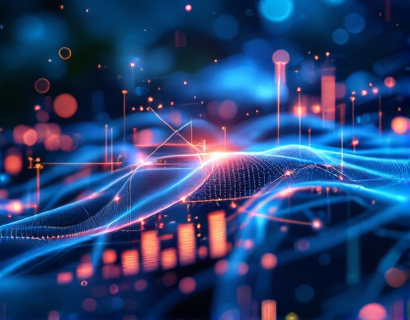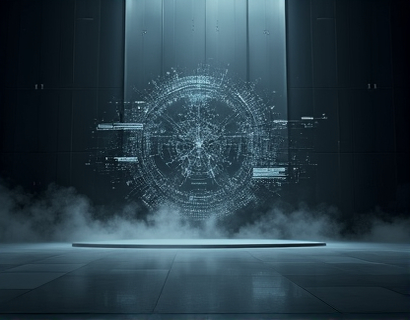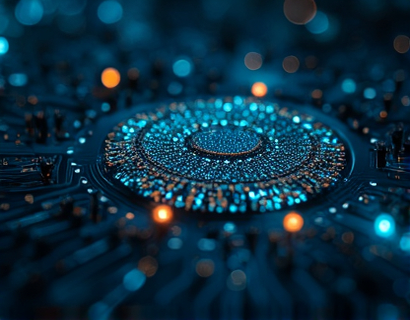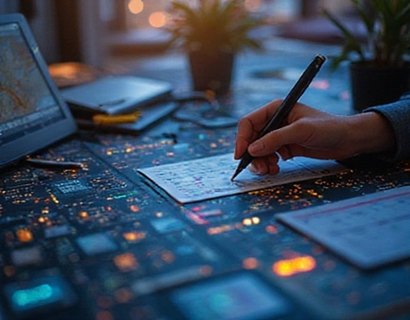Unlocking Digital Efficiency: Harnessing Crypto and AI for Next-Gen Productivity Solutions
The intersection of cryptocurrency and artificial intelligence (AI) is giving rise to a new era of digital efficiency, transforming the way we approach productivity and streamline daily tasks. This convergence creates a marketplace where advanced applications and services are emerging, designed to simplify complex processes and connect tech enthusiasts with cutting-edge digital solutions. As we delve into this exciting frontier, it's essential to understand how these technologies are not only enhancing individual productivity but also reshaping industries and economies worldwide.
The foundation of this new productivity landscape lies in the unique properties of blockchain technology and AI. Blockchain provides a decentralized, secure, and transparent platform for transactions and data management, while AI brings intelligent automation and predictive analytics to the table. When combined, these technologies offer a powerful toolkit for developing applications that can adapt, learn, and optimize based on real-time data and user behavior.
Advanced Applications Powered by Crypto and AI
One of the most significant applications of crypto and AI in productivity is in the realm of smart automation. Smart contracts, built on blockchain, can execute tasks automatically when predefined conditions are met. When integrated with AI, these contracts can analyze data, make decisions, and perform actions with minimal human intervention. For instance, in project management, smart contracts can automatically allocate resources, track progress, and adjust timelines based on real-time data, ensuring projects stay on track and within budget.
Another area where crypto and AI are making waves is in data security and privacy. Traditional data storage solutions are often centralized and vulnerable to breaches. Blockchain's decentralized nature, combined with AI-driven encryption techniques, can create highly secure and private data storage systems. These systems can ensure that sensitive information is protected while still being accessible to authorized users, enhancing both productivity and trust in digital collaborations.
Enhanced Collaboration and Communication
The integration of crypto and AI is also revolutionizing collaboration and communication tools. Traditional communication platforms face challenges such as data silos, lack of transparency, and security concerns. By leveraging blockchain, these platforms can offer decentralized, transparent, and secure communication channels. AI can further enhance these platforms by providing intelligent suggestions, automating routine tasks, and ensuring seamless integration with other tools and services.
For example, a decentralized communication platform powered by blockchain and AI can enable secure messaging, file sharing, and video conferencing, all while maintaining a transparent and immutable record of interactions. AI-driven features can suggest optimal communication channels, predict meeting outcomes, and even translate messages in real-time, breaking down language barriers and enhancing global collaboration.
Optimized Workflow and Task Management
Workflow and task management are critical components of productivity, and crypto and AI are transforming these areas in innovative ways. Traditional task management tools often rely on centralized servers, which can be points of failure and potential security risks. Blockchain-based task management platforms can decentralize these processes, ensuring that task data is secure, transparent, and tamper-proof.
AI can take this a step further by providing intelligent task assignment, prioritization, and monitoring. AI algorithms can analyze historical data and user preferences to assign tasks to the most suitable team members, predict deadlines, and identify potential bottlenecks. This not only streamlines workflows but also ensures that resources are used efficiently, reducing waste and increasing overall productivity.
Predictive Maintenance and Operations
In industries such as manufacturing and logistics, predictive maintenance is a game-changer. By combining IoT devices with AI and blockchain, companies can monitor equipment in real-time, predict failures before they occur, and schedule maintenance proactively. This approach reduces downtime, extends the lifespan of equipment, and optimizes maintenance costs.
Blockchain ensures that maintenance records are immutable and transparent, providing a clear audit trail. AI algorithms analyze sensor data to detect anomalies and predict potential issues, while smart contracts can automate the ordering of parts and scheduling of maintenance tasks. This integrated approach not only enhances operational efficiency but also ensures compliance and regulatory adherence.
Financial Efficiency and Incentivization
The financial aspect of productivity cannot be overlooked, and crypto plays a crucial role in this domain. Traditional financial systems are often slow, expensive, and opaque. Blockchain-based financial solutions can streamline transactions, reduce costs, and provide real-time visibility into financial flows. For businesses, this means faster payments, reduced overhead, and more efficient cash flow management.
AI can enhance financial efficiency by providing predictive analytics and automated financial planning. AI algorithms can analyze market trends, forecast revenue, and optimize budget allocations. When combined with blockchain, these insights can be securely shared and acted upon in real-time, enabling businesses to make informed decisions quickly. Additionally, tokenized incentives can be used to motivate employees and align their goals with the company's objectives, further boosting productivity.
User-Centric Design and Accessibility
For these advanced applications to be truly effective, they must be user-friendly and accessible. User experience (UX) design plays a vital role in ensuring that crypto and AI-powered tools are adopted widely. A well-designed interface can bridge the gap between complex technology and everyday users, making these solutions intuitive and easy to use.
Accessibility is another critical factor. By designing applications that cater to users with diverse needs, including those with disabilities, we can ensure that the benefits of crypto and AI are available to everyone. This inclusive approach not only expands the user base but also fosters innovation by incorporating a wide range of perspectives and ideas.
Challenges and Considerations
While the potential of crypto and AI in productivity is immense, there are several challenges and considerations to keep in mind. Regulatory uncertainty remains a significant hurdle, as governments worldwide are still grappling with how to regulate these emerging technologies. Compliance with data protection laws, such as GDPR, is crucial to ensure user trust and avoid legal issues.
Another challenge is the technical complexity involved in integrating blockchain and AI. Developers need to possess a deep understanding of both technologies to create robust and efficient solutions. Education and training programs can help bridge this gap, fostering a new generation of tech professionals equipped to tackle these challenges.
Scalability is also a key consideration. As the number of users and transactions grows, systems must be able to handle increased load without compromising performance. Innovations in blockchain technology, such as layer 2 solutions and sharding, are addressing these scalability issues, but ongoing research and development are essential.
Future Outlook
The future of productivity is bright, with crypto and AI poised to drive significant advancements. As these technologies continue to mature, we can expect even more innovative applications and services to emerge. The convergence of decentralized systems, intelligent automation, and user-centric design will create a digital landscape that is more efficient, secure, and inclusive.
For tech enthusiasts and early adopters, this is an exciting time to be involved in the digital revolution. By staying informed, embracing new tools, and contributing to the development of these technologies, we can shape a future where productivity knows no bounds. The next generation of productivity solutions will not only enhance individual capabilities but also drive collective progress, unlocking new possibilities for businesses, communities, and society as a whole.










































